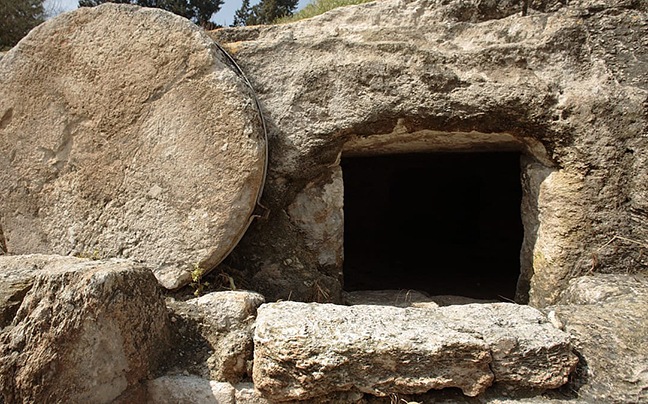Welcome!

He is not here
Perhaps, you’ve heard the inspirational Easter story first told by mid-twentieth century ABC News Radio broadcaster, Paul Harvey. For me, it never loses its impact. Rev. Harry Pritchett Jr., then Director of All Saints Episcopal Church in Atlanta, first called Mr. Harvey’s attention to a boy named Phillip and “The Empty Egg” story.
He was nine—in a Sunday School class of eight-year-olds. Eight-year-olds can be cruel. The third-graders did not welcome Philip to their group. Not just because he was older. He was “different.” He suffered from Down’s syndrome and its obvious manifestations: facial characteristics, slow responses, and symptoms of retardation.
One Sunday after Easter, the Sunday school teacher gathered some of those plastic eggs—the kind in which lady’s pantyhose are packaged. Plastic eggs which pull apart in the middle. The Sunday school teacher gave one of these plastic eggs to each child.
On that beautiful Spring day, each child was to go outdoors and discover for himself some symbol of “new life” and place that symbolic seed or leaf or whatever inside his egg. They would then open their eggs one by one, and each youngster would explain how her find was a symbol of “new life.”
So, the youngsters gathered around on the appointed day and put their eggs on a table, and the teacher began to open them. One child found a flower, and all the children “oohed” and “aahed” at the lovely symbol of new life. In another was a butterfly. “Beautiful,” the girls said. And it’s not easy for an eight-year-old to say “beautiful.” Another egg was opened to reveal a rock. Some of the children laughed.
“That’s crazy!” one said. “How is a rock supposed to be like new life?!?”
Immediately, a boy spoke up and said, “That’s mine. I knew everybody would get flowers and leaves and butterflies and all that stuff, so I got a rock to be different.” Everyone laughed.
The teacher opened the last one, and there was nothing inside.
“That’s not fair!” someone said. “That’s stupid!” said another.
The teacher felt a tug on his shirt. It was Philip. Looking up, he said, “It’s mine. I did it. It’s empty. I have new life because the tomb is empty.” The class fell silent. From that day on, Philip became part of the group. They welcomed him. Whatever had made him different was never mentioned again.
Philip’s family had known he would not have a long life; just too many things wrong with the tiny body. That summer, overcome with infection, Philip died. On the day of his funeral, nine eight-year-old boys and girls confronted the reality of death and marched up to the altar—not with flowers. Nine children with their Sunday school teacher placed on the casket of their friend their gift of love – an empty egg.”
Three days after Jesus’s death on the cross, women arriving at the tomb with spices found the stone rolled away and the tomb empty. They were met by “two men in clothes that gleamed like lightning…In their fright, the women bowed down with their faces to the ground, but the men said to them, “Why do you look for the living among the dead? He is not here; he has risen!” (Luke 24:4-6).
Reveille is a bugle or trumpet call chiefly used to wake soldiers at sunrise, muster up for roll call, and start the work day. The soldier’s quote above is appropriate for this month—one in which we’ve celebrated the resurrection of Jesus Christ. His words imply that even at his death, there would be a reason to celebrate. Because of Christ’s empty tomb, the soldier knew the grave was not the end and that he would rise to eternal life with Christ.
Do you have the same hope? Do you hear Reveille in your spirit? If not, believing in Christ’s death and resurrection for the forgiveness of our sins not only has the power to transform us at death but as we live. Knowing Jesus can erase all doubt and fear as we learn what His death and resurrection mean for us. Because of an empty tomb, when we hear the summons to arise, we, too, can have new life.
